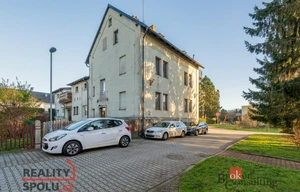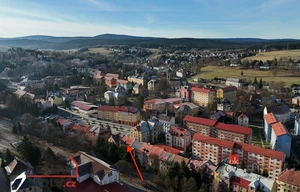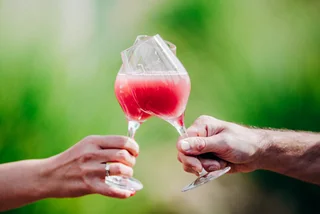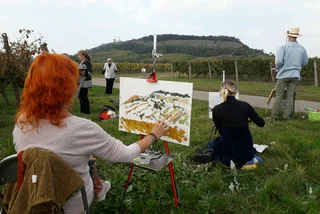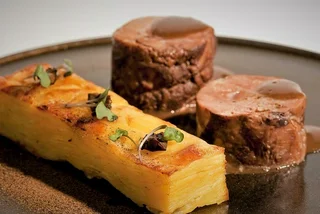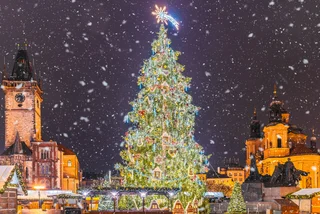The Czech Republic is synonymous with beer. After all, an entire style of beer is named after a certain west Bohemian town. Czech wine, on the other hand, maintains a rather more modest profile, and although there are over 18,000 hectares devoted to wine production, the domestic demand is so strong that there’s very little left for export.
As such, Czech wine has historically been overlooked on the international stage, but that is beginning to change.
We've put together an explainer on where and what to sip, how to talk about Czech wine, and most importantly how to visit wine country. Our guide has everything you need to raise a glass to your adopted homeland's celebrated wine culture.
Czech wine: A history
Wine came to Bohemia and Moravia in the 3rd century A.D., courtesy of the Romans, who brought the wine-growing tradition while expanding their empire beyond their Alps. The first mention of it taking roots in the Czech lands was a 9th century legend about Moravian Prince Svatopluk, who sent a barrel of wine to the Czech Prince Bořivoj and his wife Ludmila on the occasion of the birth of their son Spytihněv.
Another milestone came in the 11th century, the time of the first written documents about viticulture, which originated from the country's monasteries. Viticulture then flourished in the 14th century thanks to Charles IV, who enjoyed wine himself.
The majority of the country’s vineyards are in South Moravia, nestled near the nook of the Austrian and Slovak borders. The area benefits from a warm and sunny microclimate, which suits grape cultivation. Its two main centers are Znojmo and Mikulov – two historic towns that, wine aside, are well worth a visit, but with wine in mind, are definitely not to be missed.
In the capital, the St. Klara vineyards produce grape varieties of Riesling, Müller-Thurgau, Sauvignon, Blue Portugal, Pinot Gris, and Pinot Noir. Try and buy them at its Troja tasting room which also features a wine trail and exhibit devoted to winemaking.
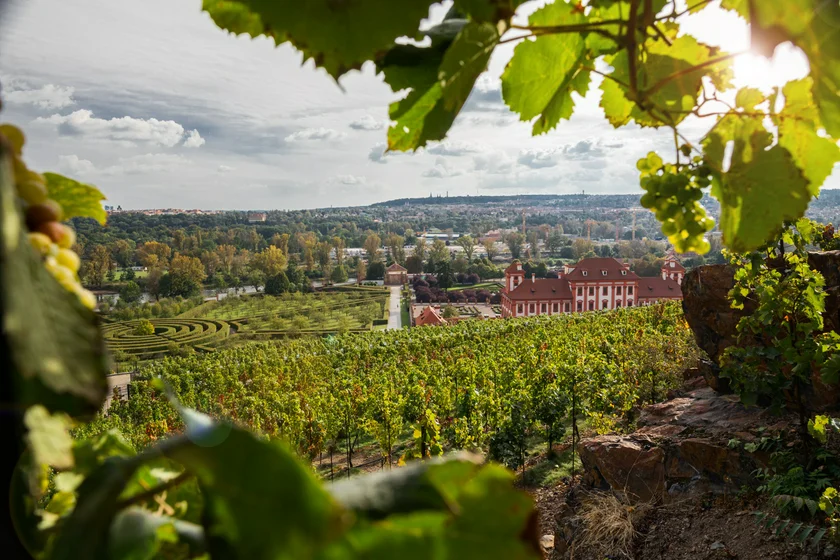
Limited numbers of grapes are also grown in Bohemia, including some vineyards in Prague itself (yes, they are vines that you see when you look up the hill at Prague Castle; allegedly planted by St. Wenceslas himself) and in the charming town of Mělník – perched on the hill that overlooks the confluence of the Vltava and Labe rivers – 30 km north of the city.
Varieties of Czech wine
Czech vineyards are remarkable for the breadth of different wines that they produce. The landscape changes every couple of kilometers, allowing for the production of multiple varieties. Often vineyards will produce at least five varieties, and sometimes as many as twenty.
Traditionally, the majority of wines produced in Moravia are whites, and Central European varieties dominate the field. Given the ethnolinguistic background of the region, you can expect to meet the same wine with either a Czech or a German name (and sometimes both).

White
The main types of white wines are Veltlínské zelené/Grüner Veltliner (the most popular white grape variety), Müller Thurgau/Rivaner, Ryzlink rýnský/Riesling, Ryzlink vlašský/Welschriesling, Rulandské šedé/Pinot gris, Sauvignon/Sauvignon blanc, Chardonnay, Rulandské bílé/Pinot blanc, Tramín červený/Gewürztraminer, Pálava, Muškát moravský, MOPR/Moravian Muscat, Neuburské/Neuburger, Hibernal, Sylvánské zelené/Grüner Silvaner, and Veltlínské červené rané/Malvasia, according to Národní vinařské centrum.
Red

Recent developments in Czech viticulture mean that the share of red varieties is increasing year on year, with reds such as Cabernet Moravia and hybrids and crossings such as Hibernal and Pálava enjoying growing popularity.
The main red varieties are Frankovka/Lemberger, Blaufränkisch, Svatovavřinecké/Saint Laurent, Zweigeltrebe, Rulandské modré/Pinot noir, Modrý Portugal/Blauer Portugieser, Cabernet Sauvignon, André, Cabernet Moravia, Dornfelder, and Merlot, also according to the Národní vinařské centrum.
A crash course in Czech for wine lovers
- Suché – dry
- Polosuché – semi-dry
- Polosladké – semi-sweet
- Sladké – sweet
- Vinotéka – Czech wine bar/shop
- Vinný sklep – Wine cellar
- Víno bez původu – table wine. The lowest category of wine and cannot bear a vintage, grape variety or any indication of its geographical origin.
- Zemské víno – country wine. This is still table wine, but it’s one step up from the truly nasty stuff. It can bear the name of the wine region, vintage and grape variety from which it was produced.
- Jakostní víno s přívlastkem – Quality wine with special attributes. This is what it reassuringly states on the bottles I brought home from my recent trip to Moravia. The wine can only be produced from a maximum of three different varieties of grapes and the quality must be assured by the State Agricultural & Food Inspectorate SZPI. Within this category, there are also:
- Ledové víno – Ice wine. A super sweet (and expensive) dessert wine produced from grapes frozen on the vine.
- Slámové víno – Straw wine/raisin wine. Wine made from grapes that have been dried to concentrate their juices. Straw wines are typically very sweet and of the finest quality.
As in many other areas of Czech life, the international big hitters like Riesling, Pinot Blanc (Rulandské Bile), Pinot Gris, Chardonnay, Sauvignon Blanc, Merlot, Pinot Noir, and Cabernet Sauvignon are now beginning to appear on Czech labels.
Burčak
For the uninitiated, the Czech national obsession with burčak may come as a surprise. If you come across groups of adults gleefully quaffing cups of cloudy liquid in the autumn sunshine, then you’ve definitely stumbled upon burčak, an alcoholic grape juice that can only be named as such if it comes from Czech grapes.
Although its season starts in August, the consumption kicks off in September, the time of wine harvest festivals (vinobraní) and roadside and supermarket stands that sell the fermented beverage until around November.
Burčak is most often made from white grapes of aromatic varieties — Irsai Oliver, Muscat Moravský, and Müller Thurgau. Red burčak, which comes from blue varieties — Svatovavřinecké and Frankovka — is rarer. Burčák rosé is even rarer still and is produced by briefly macerating blue grapes with their skins.
A beginners guide to visiting Czech wine country
The Czech Republic's reputation as having some of the best beers in the world has unjustly cast a shadow over its wine industry. The vineyards and wine cellars of Southern Moravia, the country’s primary viticulture region can offer some unique wine-tasting experiences, especially in autumn.
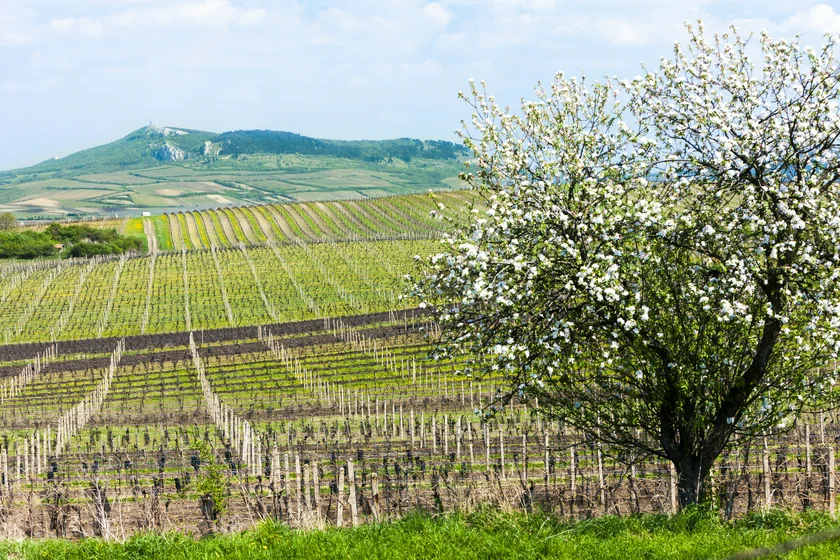
The overwhelming majority of Czech wines hail from the region of Moravia bordering Austria, where 96 percent of the Czech Republic’s registered vineyards are located. Still, areas in Bohemia around Mělník, Litoměřice, and even Most produce wines too, albeit in modest amounts.
Located in the middle of the main wine producing region, Mikulov is the epicenter of Moravian wine tourism. A picturesque town on its own, complete with a chateau dominating the skyline, Mikulov is definitely worth a visit in any season.
The best way to experience the full assortment of local wines is by heading to vinné sklepy, or wine cellars; it's a good idea to book a wine degustation in advance, as some of them have a minimum number of people for a reservation. You can read more about wine tourism in the Czech Republic here. You can also find a guide to little pockets of wine country perfect for a weekend trip here.
Annual wine events in Czechia
- There are several annual festivals, each with its own particular focus.
- The towns and villages around Mikulov and Znojmo boast several wine-based events throughout the year.
- In Prague, the Pink May Festival takes place each spring on the Náplavka, and offers a wide selection of roses and clarets.
- The Prague Drinks Wine Festival brings together Central European winemakers who are passionate about creating natural wines that are untouched by chemical sprays, receive no additives, and are unmolested by cellar manipulations. With around 50 producers on display, the annual festival is held in the New Town Hall.
- Keep an eye out for your local vinobraní (neighborhood wine festival) where burčak will flow freely. Many Prague districts will host their own, with the events at Grébovka and Náplavka being among the most popular, attracting crowds from across the city. The events take place every year in the first half of September.
- Traditionally celebrated on Nov. 11, the St. Martin feast is an occasion to taste the year’s new wine, usually accompanied by a goose-based meal. In addition to Náplavka on Nov. 11, other celebrations take place at the Národní zemědělské muzeum, Villa Richter, and náměstí Jiřího z Poděbrad on Nov. 13.
Prague wine bars
There's no shortage of extraordinary wine offerings in the Czech capital. In the wine bars mentioned below, you can sample and sip not only Czech but French, Italian, and many more wine varieties paired with nibbles and small plates.
Bokovka
Translated as “Sideways” after the popular California wine movie, this trendy bolthole, tucked away in a courtyard on Dlouhá was started by a group of wine lovers, who also happened to be well-known Czech actors. European wines, plus offerings from Moravia dominate the wine card. (Website)
Danu
This Vinohrady newcomer the first wine restaurant in the Czech Republic to receive a star from the Star Wine List focuses on the traditional recipes and ingredients as well as the wines of the Danube region which encompasses bottles not only from Czechia but also the winemaking regions strung along the Danube like beads: Germany, Austria, Slovakia, Slovenia, and Hungary. (Facebook)
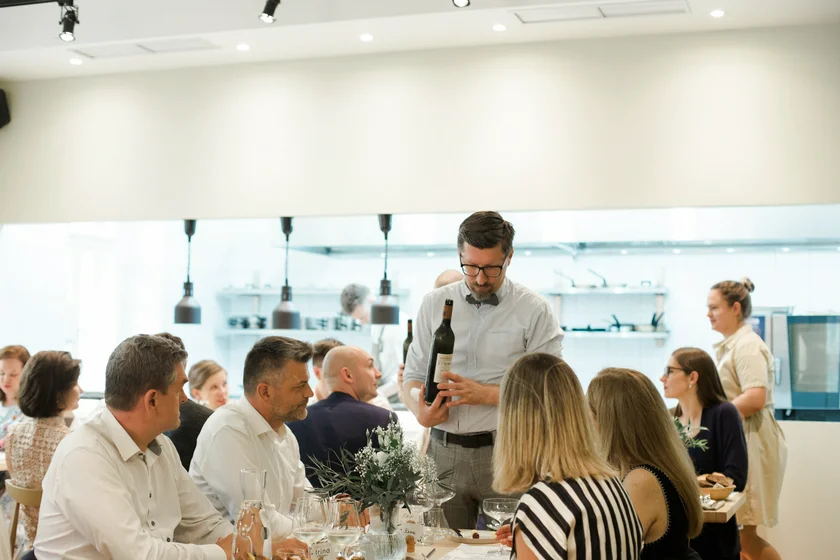
Lot of Wine
The former owners of the famed Oliva restaurant, Peter and Svetlana Červenka, and the owners of the vineyards at Domaine de Bonaguil, Barbora, and Daniel Donath, have opened Lot of Wine Prague in Old Town. Wines from Donathovi's winery in southwest France are served alongside small bites of foie gras, terrines, sausages, and the house crispy crackers. (Website)
Le Caveau
French wine, cheese, and pastry lovers should hit Le Caveau for a wide selection of all three. A lively wine shop combined with a café and French bakery, its location on picturesque náměstí Jiřího z Poděbrad and its accessible wine list makes it a favorite among locals for lingering. (Website)
Na břehu Rhôny
Na břehu Rhôny has grown a network of six wine bars across Prague that serve Provence's finest — from a bag. What makes this wine bar unique are cabinets filled with so-called bag-in boxes, which are self-served by customers. Upon marking ten years in Czechia, the owners have launched a lovely space in Brno. (Website)
Olive Point
An atmospheric restaurant for wining, dining, and spending time with your family and friends. The restaurant offers not only a selection of wine to choose from but also delicious Italian dishes. Its Náměstí Míru location and relaxed neighborhood bistro and bar atmosphere make Olive Point even more desirable to visit. (Website)
RED Pif
Red Pif a restaurant and wine bar serving up a daring fusion of Czech-French cuisine, has been open since 2010 in Old Town, but closed a few years back, and has now reinvented itself in a new location that serves Czech classics (chicken paprika) and French favorites (beignets, coq au vin, and Burgundy snails). (Website)
Veltlín
Karlín neighborhood favorite Veltlín specializes in authentic wines (from winemakers who place emphasis on organically grown grapes) originating from the countries of the old Habsburg monarchy; its more recently opened sister Autentista focuses on countries such as France, Italy, Germany, Spain, Portugal, and Georgia. (Website).
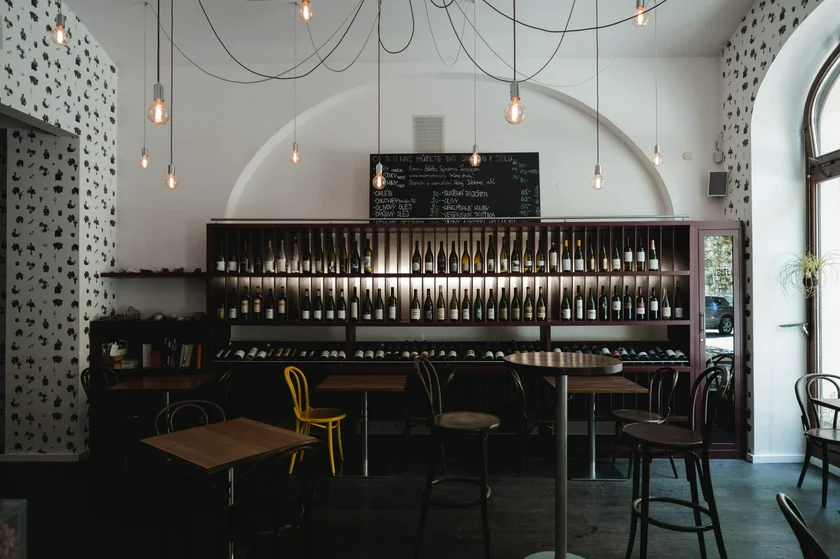
Via del Vino
If you have a soft spot for Italian wine then this little wine shop at Arbesovo náměstí is worth your attention. Via del Vino has a variety of wines to choose from, and you can even try a glass or two for free while making your choice. Even if you have no prior knowledge about wines, this small shop is worth checking out as their customer service comes highly rated for friendliness. (Website)
Vinograf
This upmarket wine bar focused on Czech wines in the center of Prague is one of the city's oldest, with sister shops on Korunní and Senovážné Náměstí. For those who wish to broaden their knowledge and education in wine, Vinograf regularly organizes wine tastings under the direction of their head sommelier Klára Kollárová. (Website)
Wonder Wines Bar
The Wonder Wines Bar is the perfect place to begin your journey around the world of Czech wines. The bar's prominent collection of wines from all over the world includes Moravian wines from the heart of the Czech winemaking region.
Wines from Moravia are consistently the most popular among Czechs who prefer the taste and aroma of wines from their own terroir. (Website)
The Italians
A hub of quality Italian gastronomy and wines, The Italians has three stores in Prague — in Smíchov, Dejvice, and Průhonice — where you can find delicacies coming straight from Italian local farmers and family businesses. They also offer thematic dinners designed by rising stars of Italian cuisines, such as Michelin-starred chef Pasquale Laera, who was their guest last month. (Website)













 Reading time: 10 minutes
Reading time: 10 minutes 



